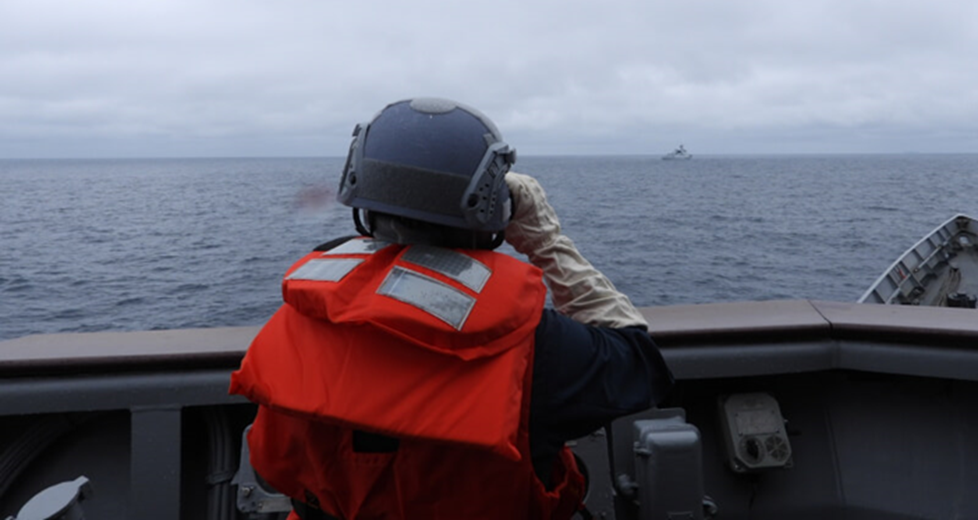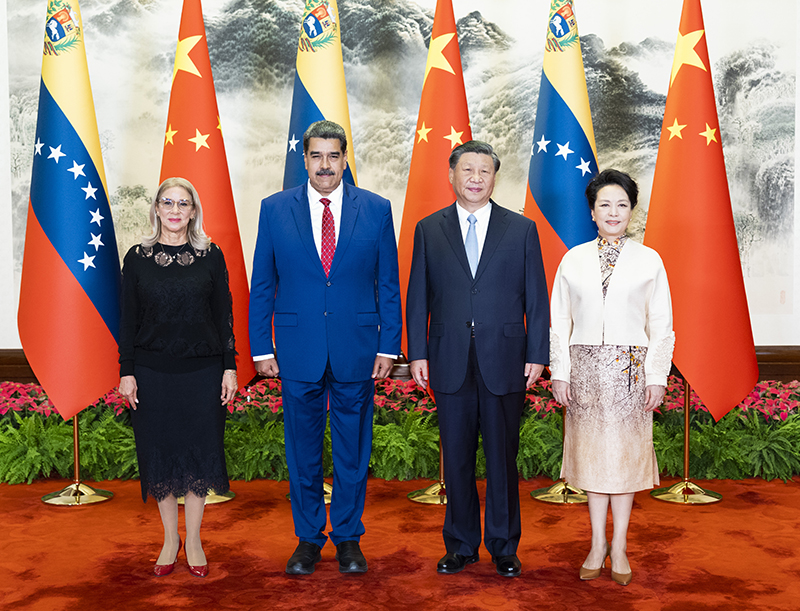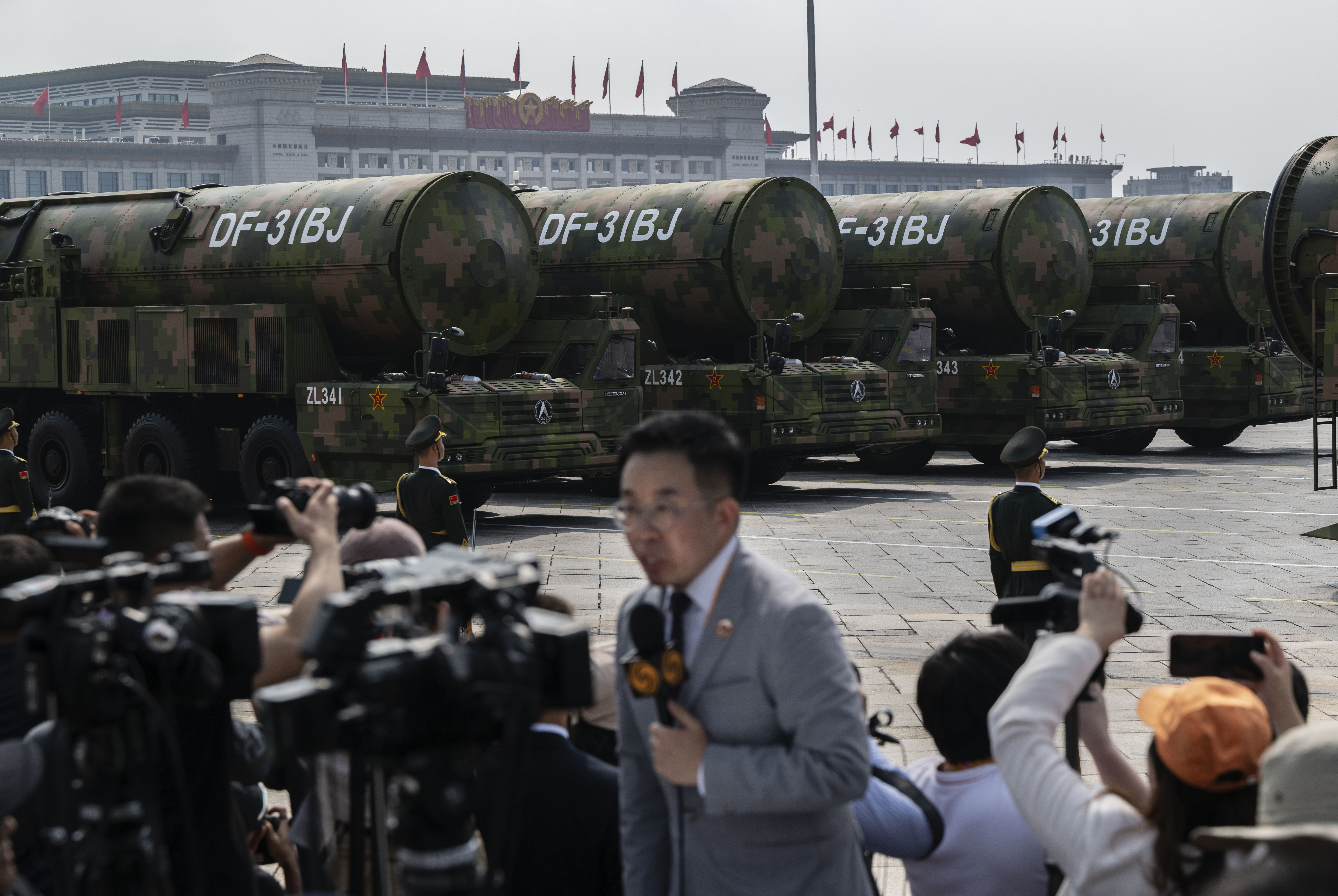
Joint Sword-2024A: Blockades and Gray Zone Tactics
Joint Sword-2024A: Blockades and Gray Zone Tactics
Executive Summary:
- The “Joint Sword: 2024A” exercise marks a shift in military strategy by integrating China Coast Guard (CCG) vessels with People’s Liberation Army (PLA) forces. This coordination enhances the People’s Republic of China’s (PRC) ability to leverage maritime law enforcement resources to support military objectives, effectively blurring the lines between military and paramilitary operations.
- The exercise demonstrated the PRC’s commitment to employing gray zone tactics, which involve coercive actions that remain below the threshold of armed conflict. This approach allows for more flexible and controllable military operations, enabling escalation and de-escalation as needed to achieve strategic objectives without triggering full-scale conflict.
- For the first time, the exercise included Taiwan’s offshore islands, including Kinmen, Matsu, Wuqiu, and Dongyin. This signifies an intent to erode Taiwan’s jurisdiction over these areas and prepare for potential future blockades or invasions.
- Taiwan responded to the exercise with enhanced transparency, swiftly sharing information on PLA activities to prevent misinformation and maintain public confidence. International reactions underscored the risks posed by the PLA’s actions, with calls for dialogue and cooperation to ensure stability in the Taiwan Strait. This response emphasizes Taiwan’s improved capability to counter PLA tactics and the broader geopolitical implications of the PRC’s actions.
At the inauguration of Taiwan’s 8th president on May 20, 2024, following the island’s 16th presidential election, President Lai Ching-te (賴清德) emphasized Taiwan’s global connectivity and urged the People’s Republic of China (PRC) to maintain peace while resisting Beijing’s coercion. In response, on May 23, the People’s Liberation Army (PLA) Eastern Theater Command announced a military exercise, “Joint Sword: 2024A (联合利剑-2024A),” around Taiwan as a punishment for separatist activities and a warning against foreign interference (81.cn, May 23).
The PLA exercise took place at nine locations, including areas around Taiwan’s main island and the offshore islands Kinmen, Matsu, Wuqiu, and Dongyin. During the two-day exercise, Taiwan detected 111 PLA aircraft, with 82 entering its air defense identification zone (ADIZ), and 53 PLA Navy and China Coast Guard (CCG) vessels (UDN, May 25). The number of aircraft involved was lower than in the 2023 iteration of the exercise, which saw 232 aircraft, of which 134 crossed the median line (NewTalk, April 11). However, this year’s exercise was notable for being the largest joint action to date involving PLA Navy and CCG vessels. No navigation restrictions or live-fire drills were announced (China Brief, May 5, 2023; RTI, May 23). Another key difference this year was the inclusion of Taiwan’s offshore islands as a focus of the exercise. These developments are part of the evolving strategy and increasing complexity of the PRC’s military maneuvers around Taiwan, which could include further drills later this year.
Offshore Islands Targeted
The inclusion of Taiwan’s offshore islands for the first time in a PLA exercise, represents a significant escalation in the PRC’s military posturing (RTI, May 29). It also reflects the PRC’s enforcement of a new normal, established after an incident in February where a civilian PRC speedboat collided with a Taiwanese Coast Guard vessel while attempting to flee after trespassing and illegally fishing in waters around Kinmen island (CNA, March 23). By incorporating these offshore islands, the PRC aims to erode Taiwan’s jurisdiction over its surrounding waters and prepare for potential future blockades and invasions (Mainland Affairs Council, May 6; Focus Taiwan, May 25). The exercise also tested Taiwan’s Penghu defense line, a series of fortifications and military installations for monitoring PLA activities on the Penghu Islands that protect the central part of the Taiwan Strait and act as a buffer zone against potential amphibious assaults from the PRC (INDSR, January 21, 2020).
The PLA did not provide specific coordinates for the “Joint Sword: 2024A” exercise. This led to slight differences between the areas announced for the exercise by Taiwan’s Ministry of National Defense (MND) and the PRC’s own MND. Taiwan’s monitoring and reconnaissance efforts showed that none entered within 24 nautical miles of Taiwan, the extent of its territorial waters and contiguous zone (Upmedia, May 23).
The PRC’s inclusion of Taiwan’s offshore islands served multiple purposes. It not only tested Taiwan’s defensive capabilities but also sent a strong political signal to Taiwan and the international community. By demonstrating the ability to project power close to Taiwan’s territory, the PRC seeks to assert its claims and showcase its growing military prowess (Xinhua, May 23). This aligns with the broader PRC strategy of using gray zone activities to gradually shift the status quo in its favor without triggering a full-scale conflict (CNA, May 23). The exercise’s timing, coming shortly after President Lai’s inauguration, underscores the additional political purpose of directly challenging Taiwan’s newly elected leadership and its policies.
Table 1: Comparison of the 2023 and 2024 ‘Joint Sword’ Exercises
| 2023 | 2024 | |
| Exercise Name | Combat Readiness Patrol and Joint Sword Exercise | Joint Sword-2024A |
| Duration | 3 days | 2 days |
| Coast Guard Involvement | None | Yes (first time) |
| Scope | Did not include offshore islands | Included offshore islands such as Kinmen, Matsu, Wuqiu, Dongyin |
| Theater | Taiwan surrounding maritime and airspace | Taiwan main island and offshore islands |
| Live-Fire Drills | None (animation to show joint firepower strikes) |
None
(3D animation simulating long-range rocket and missile attacks from the army, air maritime and Rocket Force) |
| Aircraft Carrier Deployment | Deployed Shangdong aircraft carrier | None |
Source: Author.
Integration of the CCG and PLA
The integration of CCG and PLA forces in joint exercises enhances the level of coordination and capabilities beyond what has been seen previously. Coordination with CCG allows the PRC to leverage its maritime law enforcement resources to support military objectives, effectively blurring the lines between military and paramilitary operations (Taiwan MND, September 12, 2023). Even in the absence of live-fire drills, the exercise provided the opportunity for observers to glean information about the PLA’s air-sea coordination, maritime attacks, land strikes, and its attempts at multi-domain coordination and joint strike capabilities (PRC MND, May 23, May 24). A spokesman for the Eastern Theater Command highlighted the exercise’s focus on “integrated operations inside and outside the island chain” and “testing joint operational capabilities, seizing control of crucial areas,” reflecting the PLA’s strategic goals of contesting key maritime areas and improving battlefield management around the Taiwan Strait (Global Times, May 24).
The integration of the CCG with the PLA in this exercise marks a significant development in the PRC’s military strategy. The use of coast guard vessels in this exercise is a significant signal (China Times, June 1). The two-day exercise involved not only PLA ground, naval, air, and rocket forces but also maritime law enforcement units conducting patrols around Taiwan’s offshore islands, complementing PLA activities (Institute of Chinese Communist Studies, May 27). On May 23, CCG ships from Fujian entered restricted waters around Wuqiu and Dongyin islands. The patrol routes, as shown on PRC maps, included areas within 2.8 nautical miles north of Wuqiu and 3.1 nautical miles east and south of Dongyin, entering restricted but not prohibited waters (Liberty Times, May 23). The restricted and prohibited waters around Kinmen, Wuqiu, Matsu, and Dongyin are clearly defined, with prohibited waters aligning with Taiwan’s territorial seas and restricted waters corresponding to the contiguous zone (Law and Regulations Database of Taiwan, May 30, 2018). These exercises tested joint patrols, rapid response, and emergency handling capabilities (Xinhua, May 23).
Actions encroaching on waters under Taiwan’s control have been ongoing since February, with multiple patrols by CCG vessels deployed to send a deterrent signal to Taipei (CNA, May 23). On May 24, the CCG conducted enforcement exercises in Taiwan’s eastern waters, releasing photos but no specific activity maps. PLA forces also approached Dongyin and Wuqiu islands for the first time, while CCG vessels entered their surrounding restricted waters (China News, May 24). Although no inspections of Taiwanese vessels by the PLA or the CCG were reported during “Joint Sword: 2024A,” insiders quoted by Xinhua News Agency warned that if cross-strait relations worsen, Beijing might repeat the “Kinmen model” in other parts of the Taiwan Strait. In other words, CCG vessels could enter prohibited waters or inspect Taiwanese vessels around Wuqiu and Dongyin (Xinhua, May 23). Both islands are strategically and militarily significant as they are close to the PRC mainland and control maritime routes in the Taiwan Strait, serving as a frontline in Taiwan’s defense.
The use of CCG vessels also demonstrates the PRC’s commitment to employing gray zone tactics, which involve coercive actions that remain below the threshold of armed conflict, to achieve its strategic objectives. The exercise in May did not match previous exercises along several metrics. For instance, this year’s exercise did not involve any live-fire drills, while the 2022 exercise saw large-scale missile tests, and the inaugural Joint Sword exercise in 2023 saw the deployment of an aircraft carrier. The move away from such tactics in the May exercise could suggest a stronger focus on gray zone operations, which are more flexible and controllable, allowing for escalation and de-escalation as needed, making them easier to conclude (Prospect Foundation, January 16).
Taiwanese International Responses
Compared to previous responses to PLA military coercion, this time around, Taiwan’s MND responded quickly and appeared to place greater emphasis on transparency. The MND swiftly integrated and publicly shared information on PLA activities during the exercise, as well as publicly releasing images of F-16V fighters and P-3C patrol aircraft monitoring PLA jet fighters and ships for the first time (Tai Sounds, May 26; RFA, May 30). Additionally, Taiwan’s Chief of the General Staff commended the Psychological Operations Brigade for their proactive countermeasures during the exercise (Military News Agency, May 31). By informing the public about the PLA’s military exercises, Taiwan preempts misinformation and panic, ensuring the public remains well-informed and less susceptible to psychological manipulation. These measures highlight Taiwan’s improved efficacy in countering PLA tactics. Nevertheless, some questioned why the Lai administration did not publicize “Joint Sword: 2024A” in advance. Records show that the head of Taiwan’s National Security Bureau claimed the MND detected unusual PLA movements along the PRC coast before President Lai’s inauguration and anticipated military exercises (China Times, May 29).
The Beijing government conducted this exercise to send a strong political message to Taiwan. The PLA primarily serves the Party and its political goals, as emphasized in recent speeches from PRC leaders and military documents (81.cn, July 19, 2023). CCP General Secretary Xi Jinping has intensified military pressure on Taiwan, using PLA drills and other exercises as the main deterrent against Taiwanese independence (NBR, May 7). “Joint Sword: 2024A,” held three days after President Lai’s inauguration, aimed to punish Taiwan for electing Lai, whom state media characterized as a “Taiwan independence worker (台独工作者)” and a “peace destroyer (和平破坏者)” (Global Times, May 21). The PRC’s Ministry of National Defense echoed this framing, describing the exercise as a direct response to President Lai’s inaugural address. PLA spokesman Colonel Wu Qian (吴谦) stated that Lai’s actions challenged the One-China principle by advocating the “Two-State Theory (两国论)” and attempting to reject reunification. Wu warned that each provocation would lead to stronger countermeasures until full reunification is achieved (81.cn, May 25).
“Joint Sword: 2024A” also aimed to deliver a warning message to the United States. At a press conference on May 15, spokesman for the PRC’s Taiwan Affairs Office Chen Binghua (陈斌华) reiterated the country’s opposition to US support for “Taiwan independence forces” and urged it to stop arms sales to Taiwan (Taiwan.cn, May 15). The PRC government also opposes high-level US officials’ visits to Taiwan and Taiwanese presidential transits through the United States (NBR, May 7). Using military exercises to function as a deterrent aligns with the PRC’s approach under Xi to preventing and controlling crises. [1]
International reactions highlighted the potential risks posed by PLA. Japanese Minister for Foreign Affairs Yoshimasa Hayashi underscored the importance of peace and stability in the Taiwan Strait for both Japanese and global security, calling for dialogue and cooperation with allies, especially the United States (RTI, May 23). The EU, meanwhile, urged restraint and stressed the need to maintain the status quo in the Taiwan Strait (European Union, May 23). The United States expressed concern over the risk of escalation, reaffirming its commitment to regional peace and stability (UDN, May 26). Finally, Singapore’s Deputy Prime Minister Lawrence Wong warned of severe global repercussions from any conflict and urged dialogue between the United States and the PRC to mitigate risks (CNA, May 24).
Conclusion
May’s “Joint Sword: 2024A” exercise highlighted the complexity and evolving nature of the PRC’s military strategy toward Taiwan, as well as reflecting its broader geopolitical ambitions. It demonstrated the PRC’s willingness to pressure the Lai administration, framing the maneuvers as a direct response to Taiwan’s democratic elections and leadership statements. The exercise also saw unprecedented coordination between the CCG and PLA, which is likely to increasingly become the norm in maritime operations around Taiwan and the South China Sea. The inclusion of offshore islands in military exercises for the first time is also evidence of intent to erode Taiwan’s jurisdiction and prepare for potential future operations.
Notes
[1] See 肖天亮主編, 战略学 [Science of Military Strategy]. (北京市: 國防大學出版社, 2020), Chapter 8.


